Song lyrics can be so versatile in the classroom: Creative writing inspiration, making non-fiction more engaging, etc. Here are 15 more songs for teaching ELA, and suggestions on how to use them.
Ask and you shall receive! My other post, 15 Songs to Use in ELA has gotten so much positive feedback that I decided to make a sequel 🙂 Like before I am linking to these songs on YouTube, but it’s not necessary for students to watch the videos. And as always, not all songs for teaching ELA will be appropriate for all classrooms; you know your students best 🙂
I also have a new resource (2023) that has 15 lesson plans analyzing pop culture short texts, like songs, TV episodes, short films, and more! Check out the 15 Pop Culture Analysis Activities resource here.
More Songs for Teaching ELA
1. “Poor, Unfortunate Souls” (The Little Mermaid)
“Poor, unfortunate souls
In pain, in need
This one longing to be thinner
That one wants to get the girl
And do I help them?
Yes, indeed!”
It’s so easy to find Disney songs for teaching ELA, and this one is perfect for discussing persuasion. How does Ursula woo Ariel into giving up her voice? How does she position herself and build ethos? How does she develop pathos and use logos? One of my favorite reason to use songs in ELA is to get students looking at familiar narratives through a critical lens, and this song definitely serves that purpose!
I also have an Intro to Rhetoric activity available 🙂
2. “For Women” by Talib Kweli
“She tried to get it where she fit in,
On that American Dream mission paid tuition,
For the receipt to find out her history was missing and started flippin’,
Seeing the world through very different eyes.”
In this song, Kweli pulls inspiration from “Four Women” by Nina Simone. In Simone’s original work, she created four women from different backgrounds and walks of life, united by a common cause: to be ‘named’ in a society that overlooks them. Kweli expands on this, giving each woman a verse that tells a vivid story. This song is perfect for helping students explore unifying themes and character development (CCSS.RL.9-10.3). Kweli and Simone both rely on characters that span generations, so each develops their story using flashbacks and allusions (CCSS.RL.9-10.5). You could also bring in Sojourner Truth’s speech, “Ain’t I No Woman?” to tie in some nonfiction.
A word of caution: This is one of those songs for teaching ELA that have strong imagery that you’ll want to preview. Additionally, there is use of the n-word in a careful and intentional way that reflects on the changing rights and enfranchisement of African Americans. However, you know your students and community best. You’ll want to prepare yourself to prepare them to talk about this content with maturity.
3. “Sound the Bells” (Dessa)
“Boys, sound the bells
The sun rose from the west today
I doubt we’ll see it set.”
This is one of my favorite songs in general, and especially one of my favorite songs for teaching ELA. This seemingly-simple song develops a strong dystopian setting (or pre-dystopian, as in “save our society before it’s too late!”) and has some beautiful allusions and imagery. This is one of my favorite lyrics in any song ever:
“Looks like our writing on the wall
is lorem ipsum after all.”
This song lends itself to inclusion in your creative writing prompts, along with discussions of musical context and current events. Love this song!
4. “What’s Goin’ On” by Marvin Gaye
“Picket lines and picket signs:
Don’t punish me with brutality.
C’mon talk to me,
so you can see, what’s going on.”
In a stark departure from the style and content of his many Motown hits of the ‘60s, “What’s Goin’ On” addresses head-on the violence happening in the streets of America. Gaye found inspiration in many real-life events (Civil Rights Era protests, the Watts riots, and Vietnam War protesters), so this song could pair with many nonfiction articles.
In an interview with Rolling Stone, Gaye said, “In 1969 or 1970, I began to re-evaluate my whole concept of what I wanted my music to say … I was very much affected by letters my brother was sending me from Vietnam, as well as the social situation here at home… I wanted to write songs that would reach the souls of people. I wanted them to take a look at what was happening in the world.”
Marvin Gaye asked, “What’s Goin’ On?” in 1971, but today —nearly 50 years later— we are still asking the same question. What social issues are important to your students? This is one of those songs for teaching ELA that could inspire them to write a poem, short story, or essay describing their view of “what’s goin’ on”. What issues do they want to change? What problems do they feel are being overlooked? How can they help?
Need something else? You can find ALL my recommendation lists for inclusive classroom materials here. Poems, novels, TED talks, short stories, and so much more!
5. “Re: Your Brains” (Jonathan Coulton)
“Heya Tom, it’s Bob from the office down the hall
It’s good to see you buddy, how’ve you been?
Things have been OK for me except that I’m a zombie now
I really wish you’d let us in.”
This is one of the best songs for teaching diction. Bob, a freshly-minted zombie, is very kindly trying to persuade Tom to let him in so that he (Bob) can eat his brains. The premise is dark, yes, but the lyrics are laugh-out-loud funny, and the use of corporate speak is practically charming. Maybe it’s also a metaphor for feeling trapped by our chosen professions, but let’s stay positive and focus on the brain-eating. 😉
6. “What a Wonderful World” by Louis Armstrong
“The colors of the rainbow so pretty in the sky,
Are also on the faces of people going by.
I see friends shaking hands saying ‘How do you do?’
They’re really saying, ‘I love you’”
Since its debut in 1967, this song has been featured in over 50 movies and TV shows. Its lyrics conjure up some beautiful imagery. It has a strong use of color (trees of green, red roses, skies of blue, clouds of white, etc.), and especially contrasting colors. You can use this song for teaching imagery as a poetic device.
You could also ask students to rewrite the song with new images that they feel represent their view of a “wonderful world”. This is a great opportunity to use a mentor text to scaffold some creative writing.
The lyrics from these songs for teaching ELA are all great source material for Found Poetry!
7. “Beautiful” by Christina Aguilera
“I am beautiful,
no matter what they say.
Words can’t bring me down.”
Y’all, the teen years are tough. But the good news is that you can support your students by giving them chances to practice positive self-talk. Experts agree that students with better self-esteem are more likely to have a growth mindset. Here are 7 ways to foster self-esteem and resilience in all learners.
In the classroom: You could give students a chance to write their own affirmations, or even use a resource like my Asset Based Profile Activity that allows students to identify their strengths. Subscribe to my emails to score a freebie of this Asset Based Profile resources (and so much more)!
You could even pair this song with a classic like “Song of Myself” by Walt Whitman. This is a great song for teaching students to compare and contrast how the two narrators practice self-reflection.
8. “Strange Fruit” by Billie Holiday
“Scent of magnolia, sweet and fresh,
Then the sudden smell of burning flesh.”
Abel Meeropol, a Jewish teacher and songwriter, first published these lyrics as a poem in 1937. He later set them to music. Billie Holiday recorded the song in 1939 as a bold protest. Her label, Columbia, even refused to produce it. According to a biography of Holiday by David Margolick, “She said that singing it made her fearful of retaliation but, because its imagery reminded her of her father, she continued to sing the piece, making it a regular part of her live performances.”
And Holiday had plenty of reason to be fearful. According to a report by the Equal Justice Initiative, 4,084 African Americans were lynched between 1877 and 1950 in the South. This is a disturbing chapter in American history, but an important one to remember. Lynching was not classified as a hate crime until 2018, and racially-motivated violence is far from being a thing of the past.
Disclaimer: Due to its subject matter, this is one of the songs for teaching ELA that contains graphic imagery.
9. “Eleanor Rigby” (The Beatles)
“Eleanor Rigby picks up the rice
In the church where a wedding has been
Lives in a dream
Waits at the window
Wearing the face that she keeps in a jar by the door
Who is it for?”
This classic Beatles song follows one sad woman who works in a church. Setting is strongly developed, along with an unforgettable character and a statement about anonymity in society. Students can also explore figurative language and examine this song as poetry. This is one of my favorite songs for teaching literary elements in ELA.
10. “Be Prepared” (The Lion King)
“I know that your powers of retention
Are as wet as a warthog’s backside
But thick as you are, pay attention
My words are a matter of pride.”
Get it? Pride? Because he’s a LION! Har, har, har! While we’re talking about Disney, I wanted to let you know that I love this song, and the possibilities are endless for bringing it into the ELA classroom. There are a ton of word play examples in this song, along with rich opportunities for vocabulary study. I think it’s one of the best songs for teaching diction and word choice, along with figurative language. It’s really got it all.
11. “Jolene” by Dolly Parton
“He talks about you in his sleep
And there’s nothing I can do to keep
From crying when he calls your name,
Jolene.”
This is a great example of how songs can fit perfectly into a poetry unit. Parton’s keening refrain of the name “Jolene” provides an excellent example of repetition as a poetic device. Each time she invokes her rival’s name it feels more and more desperate. Pair this with Poe’s “The Raven” as a song for teaching how haunting repetition can be. It also provides a strong example of simile in how Parton describes the title character.
12. “Respect” by Aretha Franklin
In her hit single, The Queen of Soul proclaimed,
“R-E-S-P-E-C-T, find out what it means to me.”
But what does it mean to your students?
Each of us has our own unique conception of ‘respect’. Many cultures differ on what it is, how it’s shown, and who deserves it. Our definition of respect is a cultural touch point that can lead to disagreements, so a better understanding of where others stand can help develop empathy and strengthen a classroom community. You can have your students write about what respect means to them and their families and discuss this further in small groups.
13. “You Can Let Go” by Crystal Shawanda
“It’s gonna be a little bit scary,
But I want you to know
I’ll be ok now, Daddy.
You can let go.”
This is a great song for teaching how the same words can have different meanings; and how those meanings can evolve. It’s also a great example of pacing and showing the passage of time. Without just three verses and a chorus, this song shows us a lifetime of memories. Another song for teaching that follows this structure is “Don’t Take the Girl” by Tim McGraw.
14. “Dear Mama” by 2Pac
“There are no words that can express how I feel.
You never kept a secret, always stayed real
And I appreciate how you raised me
And all the extra love that you gave me.”
Many consider Tupac Shakur, (stage name 2Pac) to be the greatest rapper of all time. He is the only solo rapper to be inducted into the Rock & Roll Hall of Fame. This song, Dear Mama, was inducted into the National Recording Registry of the Library of Congress in 2010. The NRR selects “sound recordings that are culturally, historically, or aesthetically important, and/or inform or reflect life in the United States.”
Dear Mama tells the story of a tumultuous childhood, and a mother who, though deeply flawed, is loved and appreciated by Shakur. This song pairs well with the poem “Mother to Son” by Langston Hughes.
Students might already be familiar with 2Pac if they are fans of Angie Thomas. 2Pac was a huge inspiration for her bestselling YA novel, The Hate U Give, here EpicReads outlines some of the ways he influenced her writing.
Sign up for our YA Reads Newsletter!
You’ll get recommendations of books similar to The Hate U Give
delivered to your inbox!
15. “Nothing Better” (The Postal Service)
“Tell me am I right to think that there could be nothing better
Than making you my bride and slowly growing old together?”
We’re finishing this list strong. This song is one of my favorites to read like a book. We begin with a protag who asks ‘Will someone please call a surgeon?’ This plunges us into the action (great hook!) and we figure out in a couple of lines that there’s been a breakup. Still, our protag is a lovable guy, it seems, and we sympathize with him. …And then the woman speaks:
“I feel I must interject here
You’re getting carried away feeling sorry for yourself
With these revisions and gaps in history.
So let me help you remember.”
This multi-vocality (or multiple perspectives) is a sweet surprise, and it becomes clear that our original protag is an unreliable narrator, which I write more about in this post. We begin to see the whole picture and our allegiance shifts. Amazing storytelling!
Song lyrics can be a great choice for Creative Reading!
What’s next?
I’d love to hear what you think! Have you ever used these songs for teaching ELA in your classroom?
I love hearing ‘real-life’ examples of how you use songs for teaching ELA in your classroom! Comment below, or reach out to me on IG @nouvelle_ela 🙂

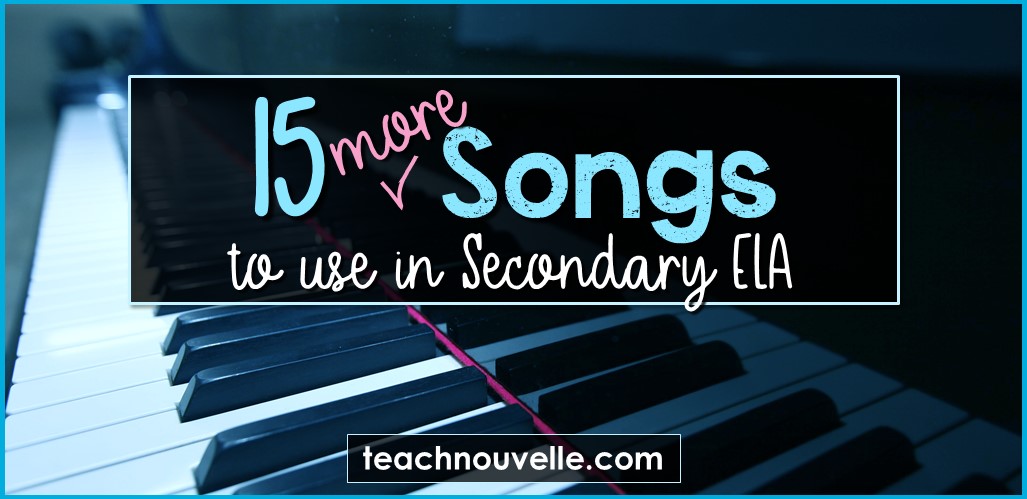
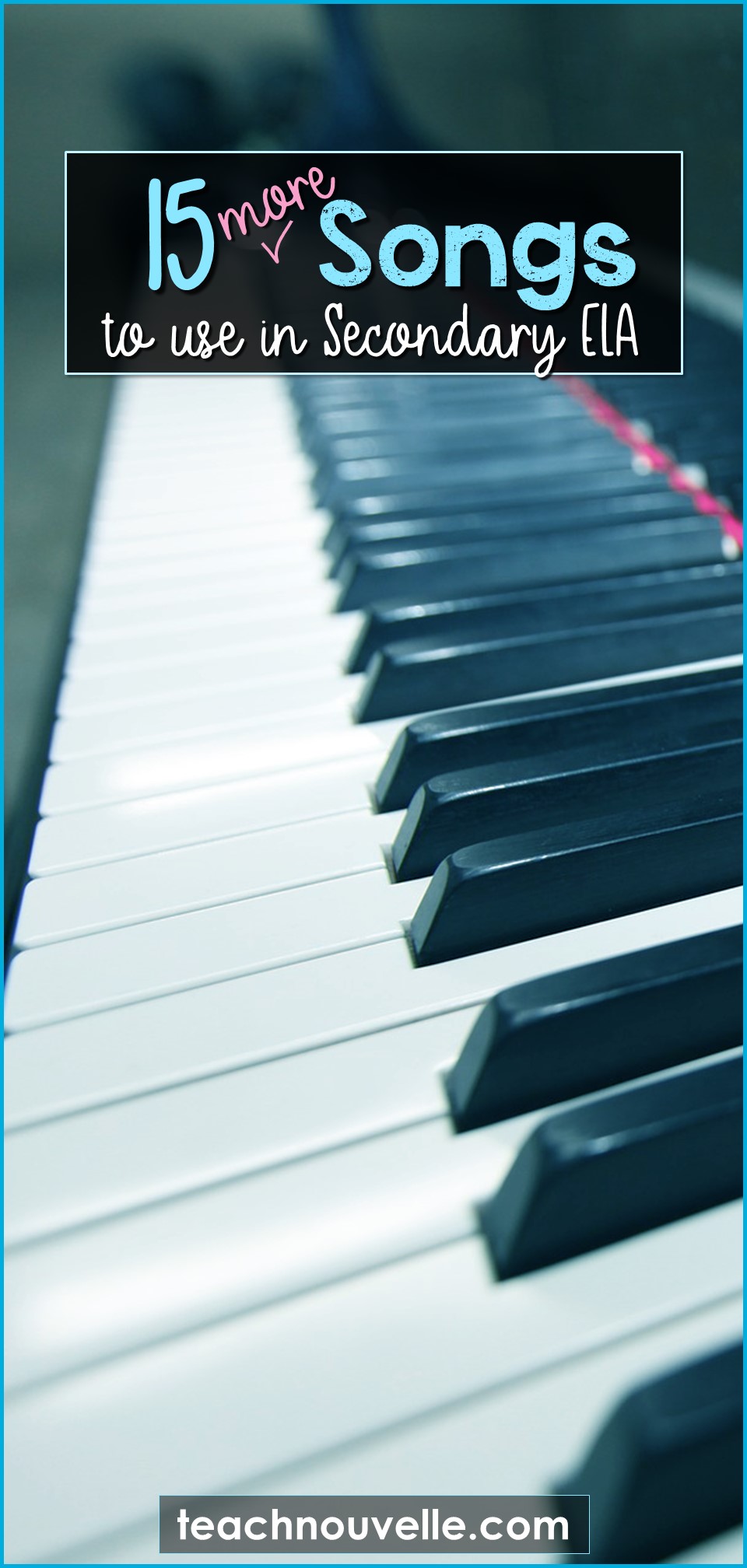
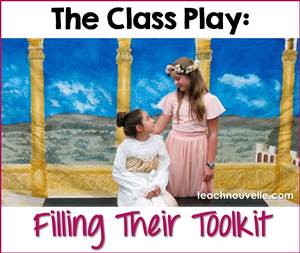
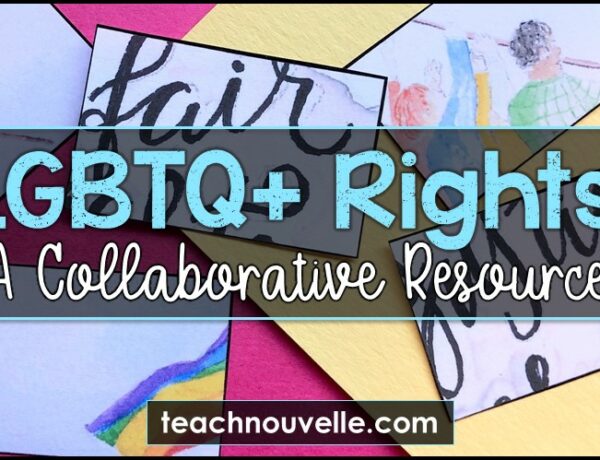
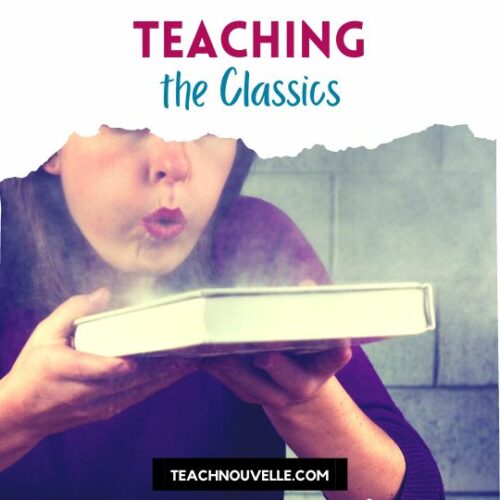
2 Comments
Bridget Rau
September 12, 2019 at 3:25 pmAmazing post!
You have some great choices and have come at them with the perfect lenses.
I too have done Music and Language within ond part of the IB Language and Literature course – Language in a Cultural Context.
We begin by understanding how and why music is such a great vehicle for Language and then focus on the blues genre (because its genesis/ lyricism etc are so illustrative of context).
We then draw parallels between the blues and more modern music to analyze for the influence of time and space on Language. The students love pairing Kendrick Lamar’s lyrics with BB King’s- for example.
John R. Magness
March 17, 2021 at 7:31 amOne of the best examples I have found is “The Trees” by Rush. The extended metaphor captures the feelings of the haves and have-nots of society, just as well today as when it was recorded. The final line screams a warning, however, about how the solution to a problem can sometimes be as bad or even worse than the original problem.